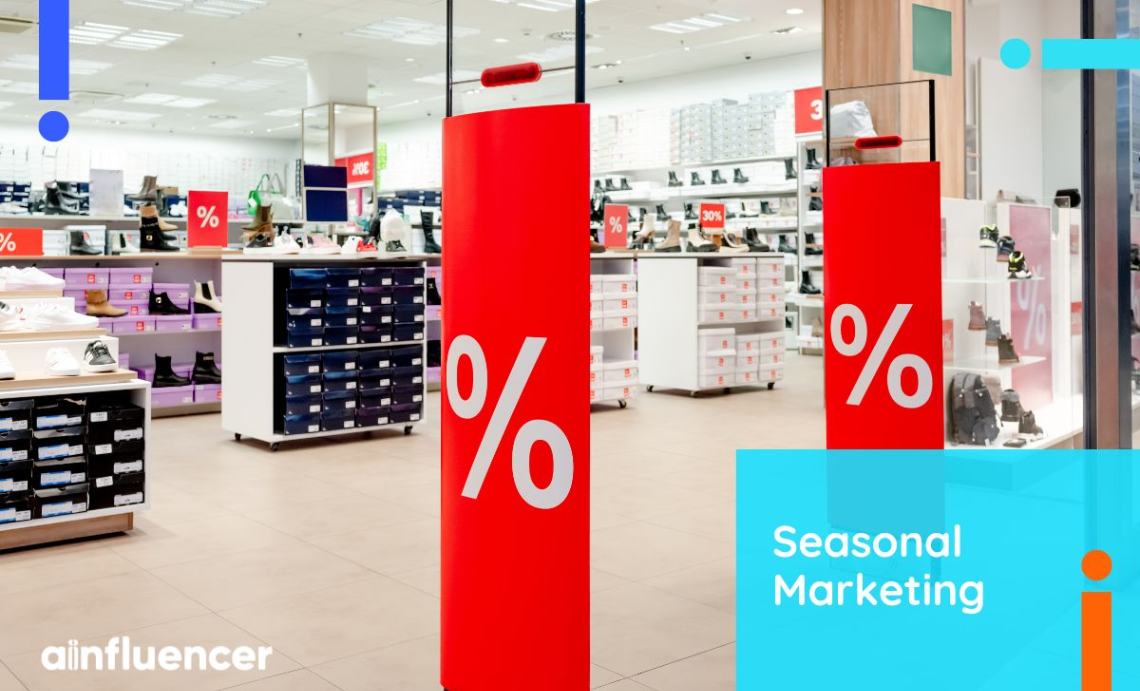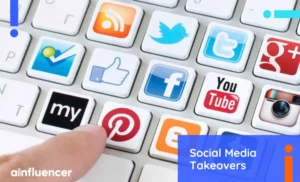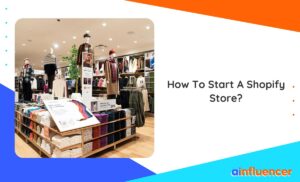Are you looking for a strategy to make fear of missing out for your customers and encourage them to take your desired action? 🤩 So, why don’t you try a seasonal marketing strategy? keep reading to figure out what it is.
Seasonal marketing means adjusting your digital marketing strategies at certain times of the year, like holidays or seasonal changes to grab attention. Seasonal marketing campaigns help companies to attract new customers, boost sales, and share details about their products, services, or special offers.
If you’re keen to learn more about this marketing effort, this article is for you. In this guide, we’ll explore seasonal marketing ideas and strategies. Ready? Let’s get started with the basics!
What Is Seasonal Marketing?
Seasonal marketing is a strategy involving time-limited promotions you run during specific times of the year. These campaigns take advantage of the increased customer interest and increase your sales during holidays, festivals, or certain seasonal events. For example, during the winter holidays like Christmas and Hanukkah, you can offer a sale with different items discounted each day leading up to Christmas. It’s tempting for customers, right? 😀
Moreover, seasonal marketing can include events like Halloween, Valentine’s Day, or major shopping days like Black Friday and Cyber Monday. The goal is to match the promotions with what customers seek during these times.
Now you may wonder how it can benefit your business. Let’s find its advantages!
What Are the Benefits of Seasonal Marketing?
Seasonal marketing is a powerful tool for your business in any industry. By aligning marketing efforts with the changing seasons and holidays, you can create stronger connections with your customers and increase brand engagement. Here is how seasonal marketing can help your business succeed:
1. Increase Your Brand Awareness & Traffic
The popularity of your company and what it offers shows how well people know your brand. Using different seasonal marketing campaigns to promote your business with special, time-limited deals is a smart idea. Creative and memorable seasonal marketing ideas can help businesses get more attention and increase brand awareness.
Seasonal marketing can include themed campaigns, festive promotions, or holiday-inspired content. This helps brands show their personality and values, making them more memorable to customers. During the holiday season, word-of-mouth and special offers attract customers. Giving good discounts and excellent support can improve brand awareness and help a business stand out in a crowded market. Sounds great, right?
2. Boost Sales
Seasonal marketing is a great way to grow like popular brands on Instagram and increase product sales and revenue. How? you may ask. Well, it attracts both new audiences and potential customers by offering special deals. Who doesn’t like to save money and get valuable products or services? So, it will boost demand and encourage customers to recommend the business to others.
3. Take Advantage of Innovation
This strategy creates an opportunity for you to be creative and think of fun seasonal marketing ideas that match the occasion. you can make funny commercials or use social media to get people involved. To sum it up, seasonal marketing helps you try new things and reach more customers in unique ways.
For example, a local ice cream shop can offer discounts based on the day’s temperature in summer! The hotter it gets, the more customers can get corresponding discounts on their favorite ice cream!
Read Also: Giveaway Examples & Ideas
4. Appealing Excitement
During holidays and seasonal events, people get excited because of the weather, spending time with family, and wanting to give and get gifts. Businesses can use this excitement and offer special deals that are only available for a short time, like during that holiday or season. In this case, customers want to act fast to get the deal, which often leads to more sales for the business.
5. Enhance Your Customer Engagement
Seasonal marketing campaigns aim to create strong relations with customers. It is a special strategy to connect with people by tapping into their feelings, customs, and cultural moments linked to different seasons or holidays.
When businesses match their marketing to the season’s vibe, they connect and engage with customers on an emotional level. This helps to build deeper connections and trust over time, which keeps customers coming back or even leads to paying customers.
What Are the Best Seasonal Marketing Ideas?
In this section, we’ll provide examples of occasions when you can engage with your audience. Moreover, this list gives you great seasonal marketing ideas for events that matter to your business. Let’s dive into them!
1. Spring Seasonal Marketing Ideas
During springtime, there are many holidays and events that businesses can use to try out new marketing ideas. Here are some of the spring holidays:
- St. Patrick’s Day, Easter,
- April Fools’ Day, Earth Day,
- Mother’s Day,
- Cinco de Mayo,
- Teacher Appreciation Day.
You can use the following spring-related ideas to plan your marketing strategies.
St. Patrick’s Day
To celebrate St. Patrick’s Day, a store could have a “Lucky Green Sale” with discounts on green clothes, accessories, and home items. You might also host a contest on social media for the best green outfits or decorations, with a gift card as a reward.
For a coffee shop, you could offer special drinks like “Leprechaun Lattes” with green toppings. Moreover, customers wearing green on St. Patrick’s Day could even get a discount on their coffee. To spice up your campaign, you can collaborate with local coffee influencers to spread the word about the discounts and attract more customers.
April Fools’ Day
You can offer a special package with playful prank items like fake mustaches and whoopee cushions. Customers can send these surprises to friends or family to bring laughter and joy. They can add personal messages, encouraging social sharing of funny moments online. This idea shows your business’s fun side and sparks conversations without always aiming for sales.
2. Summer Seasonal Marketing Ideas
Summer is a fun time with holidays like Flag Day, Independence Day, and Labor Day. It’s all about enjoying the warm weather, having barbecues, eating ice cream, and fresh corn.
Here are some seasonal marketing examples for summer to get you started:
Labor Day
How about we have a “Labor of Love” sale? You can offer a 20% discount all weekend long on every product or service. Moreover, it provides free shipping on orders over $50. This type of discount is a great seasonal marketing strategy to boost your popularity and sales!
Flag Day
Create a special collection of clothes, accessories, and home decor with unique flag designs inspired by historical flags. Then, show these exclusive items prominently online and in stores. You should also have a Flag Day photo contest on social media (like Instagram or Facebook).
Then, you can ask customers to share photos for 24 hours using your Flag Day products for a chance to win prizes like gift cards or product bundles. You can also spread your Flag Day campaign through emails, social media, and banners on your website.
3. Fall Seasonal Marketing Ideas
There are holidays like Columbus Day (or Indigenous Peoples’ Day), Halloween, Veterans Day, Thanksgiving, Black Friday, and Cyber Monday during this time. These days can inspire your marketing. Now, let’s dive into some seasonal marketing examples and ideas for fall:
Halloween
You can ask your people to post their scariest Halloween costumes using #(your brand) for a chance to win spine-chilling prizes! Moreover, posting about Halloween every week can be a fun and smart idea for businesses during October. You can show off products that could fend off zombies, vampires, or witches. You can be a bit daring or funny depending on your audience.
If you’re in a serious business like plumbing or finance, you can connect with Halloween by sharing useful content through email marketing. For example, security companies can give tips for safe trick-or-treating.
Black Friday
Black Friday is a big day for stores, both online and offline. It’s a chance for businesses to offer great deals and discounts to attract customers. You can launch hourly flash deals on your website and promote them through social media. Each deal lasts only an hour, creating urgency and excitement among customers. In this way, they will fear missing out and make a purchase!
4. Winter Seasonal Marketing Ideas
There are so many winter holidays like Hanukkah, Christmas, New Year’s, Martin Luther King Jr. Day, Valentine’s Day, Presidents Day, and Chinese New Year. Moreover, you can consider winter events such as the Super Bowl, snowy days, and staying warm.
Valentine’s Day
It’s hard to miss because it’s everywhere, from stores to TV shows. Businesses like chocolate shops, flower stores, and restaurants love to make special plans for this day. But it’s not just for them – everyone can enjoy it too!
For example, post an Instagram story and ask to share the couple’s romantic story on specific social media and tag your brand’s account! In this way, they will have a chance to win a special prize! Their love story could make this Valentine’s Day even more memorable and even increase your brand awareness.
Read Also: Key Opinion Leader Marketing
How to Create a Successful Seasonal Marketing Campaign?
Creating a seasonal marketing campaign to attract new customers involves understanding your market, your customers’ needs and interests, and the sentiment of the season. Here’s how you can do it:
Understand Your Target Audience
You need to know who your customers are so that you run a good marketing campaign. Research what your audience likes, how they act, and their buying habits throughout the year. Understanding what motivates your customers helps you create holiday campaigns they will like.
Set Clear Goals
The second step is setting SMART (stands for Specific, Measurable, Achievable, Relevant, and Time-bound) goals for your marketing. Clear goals help you know if your marketing is working. For example, you may aim to increase %25 sales compared to last year or get more leads.
Select Relevant Holidays and Events
Pick holidays and events that match your brand and appeal to your audience. Think about which holidays are important to your customers and fit with your brand.
Create Compelling Content and Offers
You should make content and offers that attract more audiences and encourage them to take action. For example, you can use storytelling to connect emotionally with your audience.
Use Multiple Marketing Channels
You can reach your audience by using different marketing channels. But, you must find out which channels your audience uses the most. Then, customize your messages and content for each channel to ensure they are relevant.
Measure and Analyze Results
The next step is analyzing your seasonal marketing campaign performance by looking at metrics like sales, website traffic, social media interactions, customer surveys, and return on investment (ROI).
Continuously Improve Your Process
One of the most important factors to succeed is learning from past campaigns and making adjustments based on the insights and feedback you gather. You can use this information to refine your strategy, optimize your campaigns, and enhance your overall marketing effectiveness.
Top Seasonal Marketing Strategies to Succeed
The following strategies can help you shoot up your sales during seasonal events by engaging customers and enhancing their shopping experience. Let’s jump into them!
#1 Build a Seasonal Email List
Creating a relevant email list is important throughout the year, but especially during specific seasons. During high-traffic periods, segment new signups by their seasonal interests. Offer incentives related to the season to attract new signups. For example, before Black Friday, offer early access to deals.
#2 Promote Seasonal Product Categories
Make it easy for visitors to find what they need during specific seasons by gathering all relevant products on one page. For example, for Mother’s Day, select and promote products that make great gifts. This focused approach helps visitors make quicker decisions and increases the likelihood of purchases.
#3 Build Anticipation with a Countdown Timer
Creating excitement for upcoming events can drive more traffic and sales. Use popups with countdown timers to promote upcoming sales. This triggers a sense of urgency and makes the event more memorable, encouraging visitors to return.
#4 Use Season-Specific Testimonials
Customer testimonials boost sales, and using season-specific testimonials can be even more effective. For instance, during Halloween, use testimonials for costumes or decorations to show how well they worked for others. This makes the product more appealing for that specific season.
#5 Create a Seasonal Game
Engage visitors with fun seasonal games or competitions. For example, an online Easter egg hunt can drive engagement and encourage purchases. Use rewards like vouchers to make the game more enticing.
#6 Use Daily Offers
During longer holiday seasons, keep visitors engaged by offering daily or weekly deals. For example, a Christmas calendar with a new reward each day can drive returning traffic and increase engagement.
#7 Add Gift Wrapping at Checkout
Offering gift wrapping at checkout can make shopping easier for customers, especially during gift-giving seasons. This small service can enhance the customer experience and encourage repeat business.
#8 Collaborate with Influencers
The last but not least idea for a seasonal marketing strategy is finding the influencer relevant to your business and Partnering with social media influencers who genuinely support your brand. They can help generate excitement about your upcoming sales well in advance. Share behind-the-scenes content, teasers, and countdowns to build anticipation.
As mentioned, collaboration with influencers is one of the best seasonal marketing examples. Let’s explore one of the professional marketplaces that can help you in this regard!
Ainfluencer: Best Influencer Marketing Platform for Seasonal Marketing
Ainfluencer is a platform that connects brands with influencers, acting like a matchmaker. It has over 500,000 influencers from TikTok and Instagram, with about 10,000 new influencers joining every month. Brands can easily create and manage campaigns to work with influencers through Ainfluencer.
Using Ainfluencer is free. Brands can start campaigns and directly negotiate prices with influencers. The platform ensures secure payments and provides tools like an AI-powered search engine to help find influencers and manage campaigns smoothly.
Ainfluencer Features
- Chat Box: Allows brands to discuss deals, make payments, and plan projects in an organized manner.
- Viewing Past Collaborations: Brands can see an influencer’s past work, reviews, and audience details.
- Unlimited Free Invitations: Brands can search for and invite as many influencers as they want in their niche.
- Smart Filters: Helps brands narrow their search using filters like follower count, platform, gender, and country.
- Smart Invites: AI sends targeted invites based on the campaign’s needs.
Ainfluencer ensures secure payments to influencers, handles disputes, and lets brands see past ratings and collaborations. One unique feature is the ability to search for influencers using hashtags. This allows brands to find creators using specific hashtags, including micro-influencers who offer more affordable options.
To see how Ainfluencer works, you can watch this video:
Why are you waiting?
To Wrap Things Up
Incorporating a seasonal marketing strategy into your overall plan can increase revenue, consumer involvement, and brand recognition at any time of year. You can use it to discover new ways to connect with your audience through personalizing messages and offers, introducing seasonal games and incentives, and generating user-generated material that will brighten your consumers’ days.
FAQs
A marketing seasonal factor is something that changes how people buy things depending on the time of year. For example, ice cream shops and beach resorts are busier in the summer. On the other hand, Christmas tree sellers make most of their money in the winter and holiday season.
Even businesses that aren’t focused on one season can still benefit from these patterns by planning for events like Easter, summer activities, Halloween, Christmas, Black Friday, back-to-school, and more.
Some seasonal products examples are only produced or in high demand during specific times of the year, such as:
Holiday décor,
Christmas wrapping paper,
Kits for giving as presents throughout the holidays,
Pumpkin spice lattes,
Gingerbread House.
Halloween, Thanksgiving, Black Friday, Cyber Monday, Christmas, New Year’s Eve/Day, and Valentine’s Day are just a few examples of seasonal opportunities that can increase your revenue and bring you closer to your audience.

![Read more about the article How to Use ChatGPT to Make Money? [The Full Guide in 2024]](https://blog.ainfluencer.com/wp-content/uploads/2024/04/jpeg-optimizer_How-to-Use-ChatGPT-to-Make-Money-300x182.jpg)



![Read more about the article How to Become a Fashion Nova Ambassador: [The Ultimate Guide + Best Alternative in 2024]](https://blog.ainfluencer.com/wp-content/uploads/2023/12/Fashion-Nova-ambassador-featured-1-300x182.jpg)



